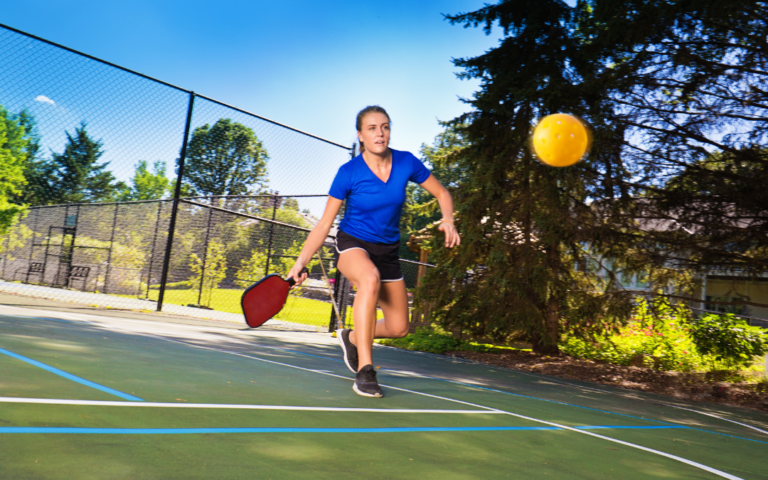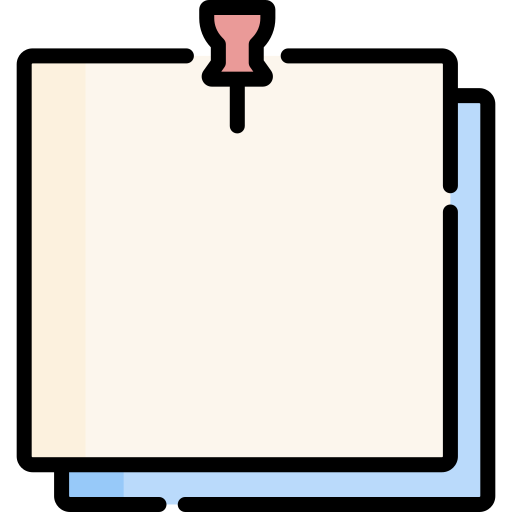
In a typical pickleball scoring system, you can only score if you’re the serving team. This means the receiving team will not earn a point if they win a rally. Instead, they get to serve the next rally and have the opportunity to score then.
Because of this rule, service in pickleball is very crucial. You cannot score points if you’re unable to serve. And you can only win if you’re able to score!
In this article, we will explore the special serving rules in pickleball so that you’re fully prepared by the time you begin playing on the court. Whether you’re a newbie to pickleball or want to brush up on the rules ahead of your next match, you must remember these pickleball service rules if you want to play the game effectively.
What Are the New Pickleball Serving Rules?
Pickleball is a pretty simple sport, but it has some strange regulations (and terminology!) that will confuse newbies.
In particular, all players need to master the pickleball serving rules if they want to become great pickleball players at any level. Knowing how to score a point with a solid and legal serve is crucial for starting the game going in the right direction.
Some pickleball rules may initially be difficult to remember, but as you practice pickleball, they will eventually become part of the routine. Now let’s check the pickleball serving rules you need to keep in mind when you practice.
1. Understand How to Pickleball Drop Serve
In pickleball, there are two methods to serve the ball—the volley serve and the drop serve.
To perform a volley serve in pickleball, you first need to throw or let the ball go, and then strike it with your paddle without letting the ball bounce on the ground (volley the serve). The pickleball volley serve is the most convenient type of service.
The second technique of serving pickleball is known as a drop serve. The Official Pickleball Rulebook established the drop serve specifically for participants with physical impairments, like a player with one arm. But it is now authorized and open for use by all players since it is a “provisional rule”.
To perform a drop serve, you just need to drop or release the ball from any reasonable height—either through hand or by having it roll off your paddle—and then strike it using your paddle once it bounces off the court.
Since they can achieve a higher contact point with a traditional volley serve compared to a drop serve, most skilled players choose to use the former. The higher contact enables players to drive the ball straight towards their opponents, compared to a drop-serve contact, which requires them to strike the ball upwards.
2. Use Only Upward Motion for Pickleball Serving
There are several legal serves, but if you’re not swinging from low to high, your pickleball serve will immediately be deemed an illegal serve.
This is specified in the official pickleball rulebook. Specifically, rule 4.A.5 stipulates that the server’s arm has to be in an upward arc when the ball is hit. You may serve using either a forehand or backhand movement in pickleball, provided your hand travels in an upward arc when the server’s paddle makes contact with the ball.
3. The Pickleball Paddle Head Should Contact the Pickleball Ball Beneath the Wrist of the Server
The Official Tournament Rulebook stipulates that you may only hit the ball if the paddle head is below your wrist. Otherwise, you will commit an illegal pickleball service.
This is easier said than done. As per rule 4.A.6, your serve is permitted if the maximum height of your paddle is lower than the highest point of your wrist, or where your wrist joint bends. So it may sound simple, but this might actually be the most challenging pickleball serving rule to implement.

4. Feet Placement
In a pickleball game, the position and location of your feet when your paddle contacts the ball is crucial. At the time of contact between your paddle and the pickleball ball during your service, ensure your feet are appropriately positioned to avoid a service foot fault:
- At least one foot must be behind the baseline, touching the surface of the pickleball court. This means that you cannot simultaneously leap and serve at the same time.
- The server’s feet must not touch the area beyond the imaginary extension of the sideline or the area on the wrong side of the imaginary extension of the center line.
5. Singles Serving Rules
Singles serving rules in pickleball is quite straightforward. The server serves from the right side of the court when their score is even, and from the left side of the court when their score is odd. After the server loses the rally or faults, a side out occurs, and the opponent is awarded the serve.
Basically, if player A is the first server, both players start on the right sides of their respective courts. If player A wins that rally and gains a point, both players then switch to the left sides of their respective courts. If player A loses the next rally, service transfers to player B. Since player B’s score is 0, both players return to the right or even sides of their court.
6. Doubles Serving Rules
The serving rules of doubles pickleball is similar to singles pickleball, except there are two players on each team instead of just one.
In pickleball doubles, the serving sequence follows a specific order. The first server starts in the right service court, and their partner stands in the left service court. The server continues serving until their team commits a fault, at which point the serve is passed to their partner. The sequence alternates between the two players on the serving team until they lose the serve to the opposing team.
7. Double Bounce Rule
The double bounce rule in pickleball prolongs rallies by removing the advantage of serving and volleying. It states that when the ball is served, the receiving team must let it bounce before returning it, and then the serving team must also let it bounce before returning it.
This means there must be two bounces of the ball, one on each side, before players can volley the ball (hitting it before it bounces) or play it off a bounce (ground stroke).
Whenever the serving team wins an exchange in doubles, the two players on that team transfer sides from left to right and right to left to start the following point.
8. Pickleball Rules on Service Faults
Pickleball service faults refer to rule violations that happen during the serve. These violations result in the loss of the rally, after which the receiving team then becomes the serving team.
The Official Pickleball Rulebook states that the following behaviors will lead in a violation on the serving team:
- serving from the wrong serving area (it’s important to keep track of scores in pickleball so you always know which side to serve from)
- using an illegal serving motion
- starting the service motion before the entire score is called
- serving the ball outside the proper service court
9. You Must Serve Across the Diagonal of the Pickleball Court
Unless you’re playing a specific type of skinny singles pickleball, you need to execute each pickleball serve diagonally all across the court. Meaning you must serve in the non-volley zone (otherwise known as the kitchen) or service court diagonally opposite you.
10. Crosscourt Serve
The pickleball serve must travel above the pickleball net and settle in the service box across the court from the server. In other terms, the service must fall inside the region bounded by the sideline, the baseline, the non-volley zone line and the center line, which is diagonally from the server upon the pickleball court.
Conclusion
Pickleball certainly has a lot of serving regulations that are sometimes different from other racket sport. If you’re a beginner to pickleball and getting somewhat overwhelmed, don’t fret. That’s normal considering everything you have to remember! Just keep practicing and I guarantee you will quickly learn the pickleball serving rules. Then they will be second nature to you.